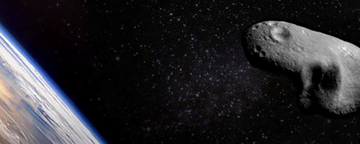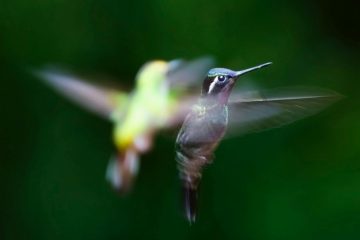The Arduous Journey of Staying Home

Relatively few humans consider themselves spacefarers. And yet we live on a spaceship spinning daily on its axis at about a thousand mph (1600 kph), slinging itself around the Sun at 67,000 mph (107,000 kph), and hurtling, with the rest of our solar system, through the universe at an ultra-supersonic 448,000 mph (nearly 721,000 kph).
Space explorers, as we usually think of them, are those brave, fit, and expertly prepared men and women who suit up for off-world adventures most can only dream of, their journeys marked by bone-rattling and flesh-flapping acceleration, followed by incredible, only-in-micro-gravity gymnastics. Meanwhile on Earth, we have no sensation to accompany our own cosmic sojourns, our staid routes so much in sync with our surroundings that we don’t even notice.
But maybe we should.
In our determined quest to set foot on other worlds, are we missing the larger picture of the universe we’ve created and collected by staying home. With an expanding array of smart and fancy tools, we have augmented our notions of spacefaring to include robotic extensions into space—probes, landers, orbiters, rovers—that have enabled us to gather multi-sensory and multi-dimensional data about other worlds. We have apps to track planets, constellations and spacecraft, and computer-generated imagery to simulate travel to all parts of the universe. We have asteroid databases, audio recordings from Mars, and virtual and augmented realities offering immersive experiences on other worlds. Greater access to imagery and data from afar offers the potential to share information and invites participation from all parts of the world—if we expand the notion of spacefaring.
Our increasingly wired world brings what we know of our universe to our devices. Each of today’s computers, smart phones, or tablet serves as a portal, offering digital access to any information connected to the same network. And if that network is the World Wide Web, then presumably any networked digital information is connected to any other networked digital information. While we are still working our way toward a properly networked world (three-quarters of those living in “developed” countries own these devices, while it’s the opposite for those living elsewhere, where three quarters do not), each new user helps build a more diverse and global space culture that challenges the authority of one voice, one culture, or one nation, in favor of a collection of voices fashioning a meta-effort that more accurately reflects our existence as Earthlings, each equipped with myriad ways to explore, learn, work, and share our knowledge of the universe.
While there are only a few places in the world where humans can leave Earth for a trip into space, today’s space age includes (but rarely acknowledges) 90+ officially recognized spacefaring nations who mostly build and launch satellites, sometimes dozens at a time (2309 satellites were launched in 2024, slightly less than the 2470 launched in a record 2023). Perhaps our BFF’s in space, those circling our home planet have immediate and long-lasting benefits for all those living on Earth: helping us optimize global communication, traffic management, crop planning, weather and climate monitoring and more.
Also among today’s mostly unrecognized spacefarers are the villages (of employees) it takes to send one person successfully into space: the nutritionist who creates space-worthy food. The seamstress who constructs the vital landing parachutes. The upholsterers who pad the seats in spaceship with enough cushion to withstand the G forces at launch time. Artists who design mission logos and crew patches. Accountants to make the budgets work. There are 11,000 workers at Johnson Space Center in Houston, a whopping 170,000 at Roscosmos in Moscow and another 170,000 at China’s Aerospace Science and Technology Corporation (CASC) near Beijing, all, arguably, spacefarers.
Add to the increasingly diverse mix of spacefarers all those space enthusiasts, students, hobbyists, readers, thinkers, and makers who work, play, and learn virtually, remotely, even playfully, with the knowledge, views, and data we have amassed about our cosmos. Thanks to the adroitness and custom-ability of media and computing tools, space as “infotainment” has evolved from PacMan/Woman to immersive and individualized 3D experiences that place the user in space, on the Moon, Mars, or on any other world that can be imagined and digitally constructed. Humans seem to be racing toward a future of artificially generated or convincingly composed spacefaring experiences—whether on Earth, another world, or elsewhere in space.
Of course, humans will leave Earth orbit again; we will visit and explore other worlds and eventually will settle on some. Once on land, these explorers will cease being astronauts and become inhabitants, families, members of communities. They will have jobs like those we have on Earth: farmers, teachers, lawyers, doctors, communication experts, IT specialists, psychologists, and spiritual leaders. There will be community gatherings, sports and other recreational events, and holiday celebrations. With a workable infrastructure and established ways to meet basic needs, lives on other worlds will function remarkably like lives on Earth. What we will learn from these pioneers is not only how to live successfully on another world, but how to apply these findings to improving lives on our home planet. In time, it will matter less which of many worlds one calls home.
What if we turn the notion of spacefaring upside down and argue instead that staying home is the better pursuit?
Then, re-define “home.”
If each of our homes is, in fact, a part of our shared universe, then aren’t we all, just by existing, spacefarers?
Yes, we are.
#
Jan Millsapps, Professor Emeritus of Cinema at San Francisco State University, is a veteran filmmaker, an early web innovator and a versatile and accomplished writer. Her documentary, Madame Mars: Women and the Quest for Worlds Beyond, premiered at the United Nations in 2018, won first prize at the Raw Science Film Festival, and toured internationally as part of the U.S. State Department’s American Film Showcase. Her work-in-progress, “Otherworldliness” constructs an alternative narrative of human space exploration—its successes, its spectacles, and its shortcomings, from today’s outdated models that deny full participation to most, to mind-boggling R&D propelling us toward our spacefaring futures. Throughout, diverse voices and stories create a rich meta-narrative of spacefaring, one that moves beyond agencies, organizations, educational institutions, and research labs to create a blended and inclusive future that offers space exploration experiences to all.
http://otherworldlinessproject.com
Counterpoint blogs may be reprinted with the following acknowledgement: “This article was published by Counterpoint Navigating Knowledge on 26 March 2025.” The views and opinions expressed on this website, in its publications, and in comments made in response to the site and publications are those of the author(s) and do not necessarily reflect the views and opinions of Counterpoint: Navigating Knowledge, its founders, its staff, or any agent or institution affiliated with it, nor those of the institution(s) with which the author is affiliated. Counterpoint exists to promote vigorous debate within and across knowledge systems and therefore publishes a wide variety of views and opinions in the interests of open conversation and dialogue.
Photo credits: © Jan Millsapps.



